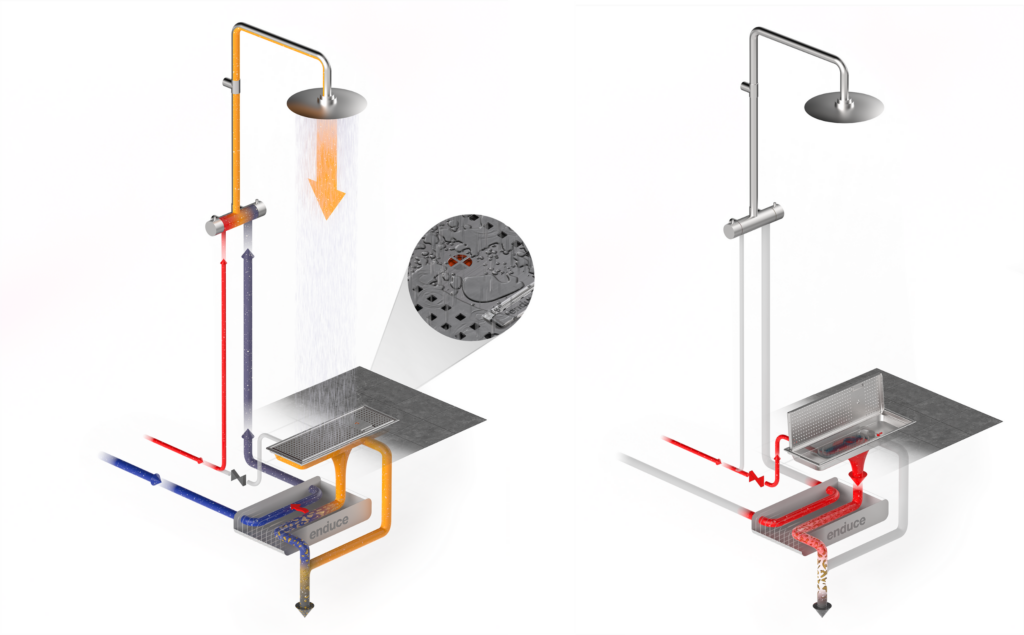Enduce E1
Maximum energy savings. Minimum effort.
A new standard for energy efficiency
Med Enduce E1With our patented and type-approved floor drain with integrated heat recovery, you can help reduce energy consumption, power requirements and climate impact - in a simple and technically robust way.
The product is tested, verified and adapted for easy integration in everything from apartment buildings to hotels and changing rooms.
Let's work together to bring a new standard to your next project.


Everything for project planning
We have gathered all the relevant documentation and technical support to enable you to easily prescribe and implement Enduce E1. On the design page you will find, among other things:
Environmental and sustainability documentation:
- EPD and LCA reports
- Construction product declaration (eBVD)
Technical documentation and design support:
- BIM object (MagiCAD)
- Instructions for installation
- Test reports (RISE)
- Templates for prescription
- Product sheet and brochure

Learn more at our webinars
Register for our next webinar and get a deeper understanding of Enduce E1. We offer several different webinars tailored for e.g. property owners, technical consultants and installers. A warm welcome!